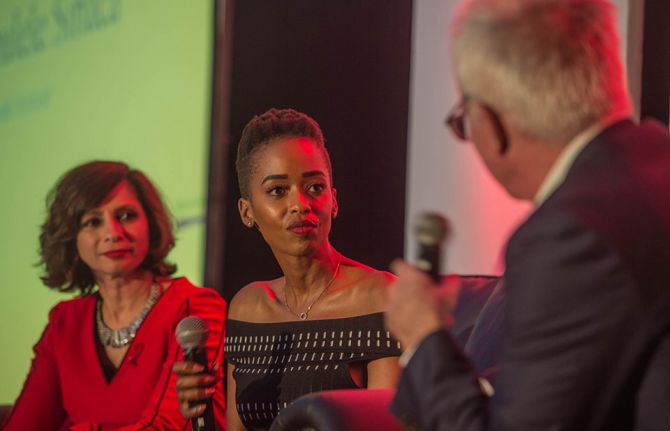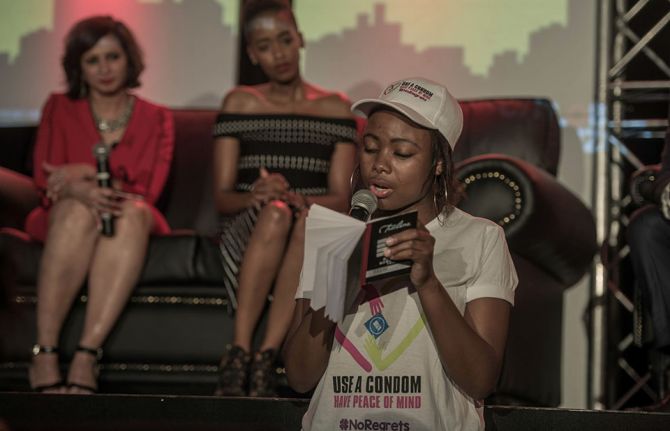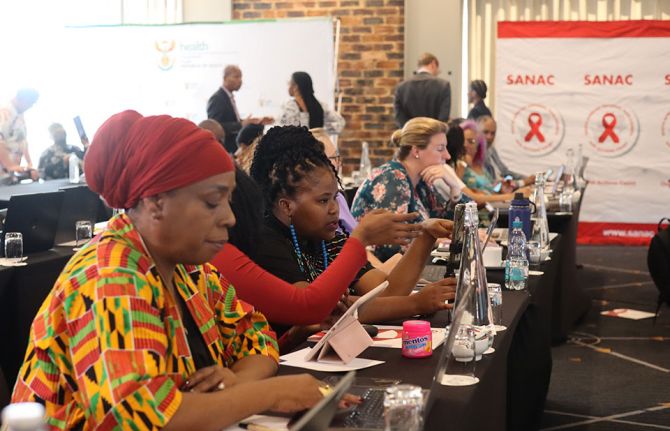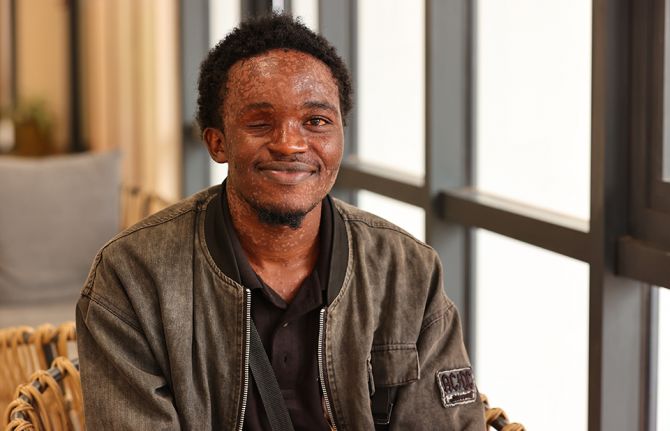



Feature Story
Young people change the narrative on HIV in South Africa
26 February 2019
26 February 2019 26 February 2019Colour my HIV is an HIV prevention and empowerment campaign led by and focused on young people in South Africa. It was launched on World AIDS Day 2018 in Johannesburg, South Africa.
The aim of the campaign is to create an information platform to debunk myths and misconceptions about HIV in order to reduce HIV-related stigma and discrimination, increase knowledge of HIV by presenting new findings by experts and researchers, promote human rights, advocate for political commitment and accountability by policy-makers and other partners and highlight issues around HIV prevention among young people.
UNAIDS sat down with Sibulele Sibaca, the founder of the campaign, to ask her a few questions.
Question: Describe Colour my HIV in five words
Vibrant. Youthful. Life-changing. Futuristic.
Hopeful in all that we do. We hope that by 2030 we will end AIDS. With Colour my HIV we’re hopeful that young people themselves will change the course of HIV.
Question: What do you want to achieve with Colour my HIV?
Firstly, I want get to a point in South Africa where being HIV-positive is like having any other chronic disease—diabetes, high blood pressure—in that it’s a manageable illness.
Secondly, to change the narrative where people think that when you contract HIV it is a death sentence. It’s no longer that at all. South Africa has one of the most well-implemented HIV treatment programmes in the world. I remember when a very close person in my life contracted HIV, the doctor said, “You should be so glad you got HIV in South Africa. This is the country to be in when you have HIV. In other countries people are still crying for HIV treatment and you have it here; all you have to do is adhere to it.”
Thirdly, the stigma around testing for HIV is that if I test positive I am going to die, so people must know that they will not die when they are HIV-positive. It’s one of the reasons I have called the campaign Colour my HIV. We must own it. We must celebrate how far we’ve come with HIV as a country. Let’s not discriminate or stigmatize, instead we must go out and get tested for HIV.
Question: Why the focus on young people?
Primarily, we were thinking of adolescent girls and young women between the ages of 15 and 24 years, because they are the most at risk of HIV infection in South Africa. In this age group, nine girls contract HIV every hour in South Africa. My question is, how and why? Where are they? What are the circumstances that lead to the moment they contract HIV? Are they hungry? This group can be influenced. The messages planted in their heads are critical, as they are still growing. So, Colour my HIV looks to be that voice of reason, to teach and educate them about why they should get tested, to prevent themselves from contracting HIV.
However, it is difficult to focus on girls in isolation. We can’t solely speak to girls, we have to engage boys as well. Men and boys hardly visit the clinic, test or take medication. They have to be included in the narrative, which is why Colour my HIV focuses on young people in general.
Question: Where do you see Colour my HIV in five years?
In the short term, we are looking to start touring South Africa from April until the next World AIDS Day, going into communities and really just spreading HIV awareness. As HIV is not only an issue on World AIDS Day, we are looking to engage communities on how they can embrace HIV and live in colour.
We actually need to end AIDS by 2030. We have 11 years to go. So, the question is what are we doing now? Hopefully this year we are going to take Colour my HIV countrywide. In the next three years, I want to see it journey from the Cape to Cairo. When they talk about ending AIDS by 2030, I want Colour my HIV to be part of the narrative.



